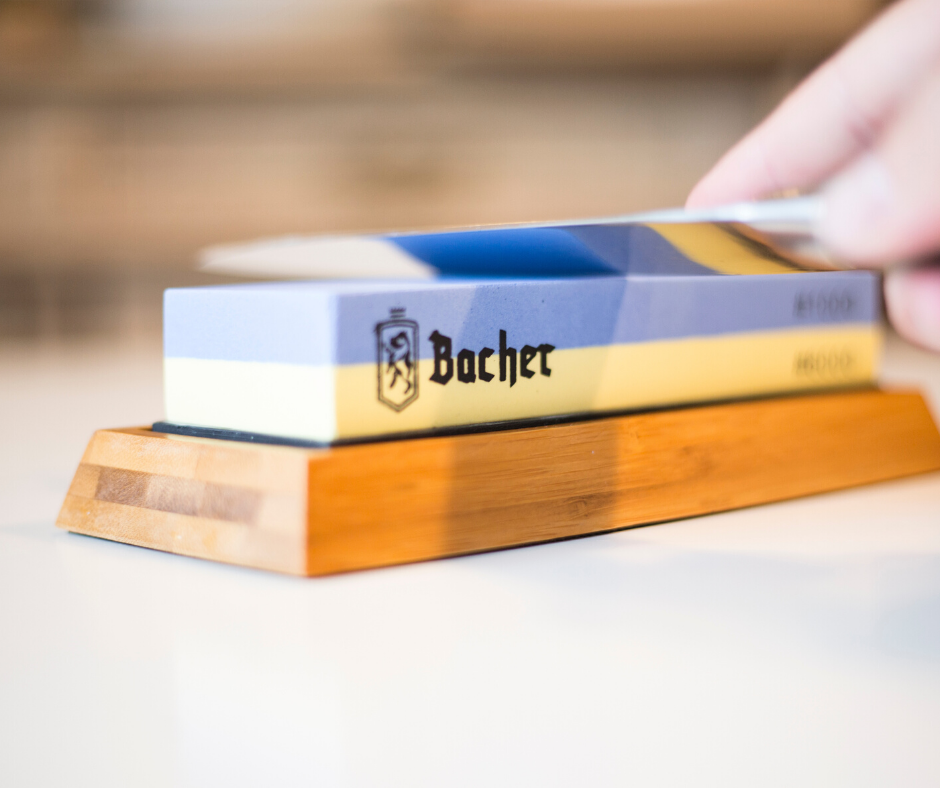The use of unsharpened knives not only results in clumsy cuts, but also carries the risk of injury. To avoid the unpleasant consequences of using dull knives, it is worth sharpening them regularly. Which sharpener should you choose so that sharpening gives satisfactory results and using knives becomes a pleasure rather than a chore?
Keeping your knives in good condition is extremely important, whether you are a professional chef or an occasional cook. The thing about all knives is that they become dull over time. Even the most expensive knife made from the finest steel will not stay sharp forever, so it is worth buying a sharpener when you buy a new knife. The right sharpener will easily restore any knife to its original sharpness. But which knife sharpener is the right one from the many on the market? Let's take a look at some of the most popular types of sharpeners.
Water stones
This is undoubtedly the most popular type of knife sharpener. Waterstones can be made of natural or synthetic stone and come in different grades to suit the needs of the knife, or simply put, the degree of dullness. The duller the edge, the lower the grit required. Most whetstones are double-sided, i.e. they have two gradations in one block. There are two important things to remember when sharpening on a waterstone. The first is to soak the stone before sharpening and to ensure that it remains moist throughout the sharpening process. If you sharpen on a dry stone, you run the risk of damaging the knife. The second important point is to keep the sharpening angle constant. For kitchen knives it should be within 15-20 degrees, for field knives 20-30 degrees. The whetstone allows you to sharpen virtually any type of knife except those with a concave part of the blade. We will be discussing knife sharpening on waterstones in more detail in future articles on our blog.
Sharpening systems
At first glance they look like rather complicated devices, but in practice they are not difficult to use. Sharpening systems are multi-component sets consisting of a holder, a guide and a set of stones of different gradations. The main feature and advantage of this type of solution is that it forces the user to guide the blade at a fixed angle, which in a sense frees the user from having to worry about maintaining the correct sharpening angle. Sharpening systems are a good option for people who want maximum precision when sharpening, but are not yet sure of their ability to maintain the sharpening angle. They are perfect for kitchen knives, field knives and razors.
Steels
This is the simplest type of sharpener as it consists of a sharpening rod and a handle. The sharpening part is usually covered with diamond abrasives or a ceramic layer. The design makes the steels light and perfectly balanced, as well as being suitable for both right- and left-handed users. The sharpening process itself is convenient, quick and very easy. This type of sharpener aligns and polishes the blade and does not require any special skill, which is why it is often used by people who do not feel strong enough to use more advanced solutions.
V-type sharpeners
As with fixed steels, the sharpening element is a rod, but with this model there are two rods mounted in a V-shape in a base, usually made of wood. The rods are set at an adjustable angle of 15-30 degrees, and sharpening is done by moving the blade along the sharpening rods from top to bottom (as when cutting). Make sure the blade is perpendicular to the ground.
Pocket sharpeners
Compact, lightweight sharpeners are usually foldable so they don't take up much space and can be used outside the home to quickly sharpen knives. The small, ergonomic body has several slots for sharpening flat knives at different angles and some models also have a rod for sharpening serrated knives. This model is often chosen by anglers, hunters and survivalists to quickly sharpen slightly dull knives and restore their cutting edge.
What should you consider when choosing a sharpener?
Choosing a sharpener from the many types on the market can be dizzying. Before deciding on a particular model, it is worth analysing a few points. The basic rule to follow when choosing a sharpener is that the material from which the abrasive part is made should be more durable than the material of the blade, e.g. diamond sharpeners are best for ceramic knives and water stones are best for steel knives with increased hardness. It is also important to remember that each knife sharpener has a specific gradation, which should be chosen according to the condition of the blade. Lower grits are for very dull knives that have not been sharpened for a long time. Higher grits will even out and smooth the blade and are best for regular sharpening.

